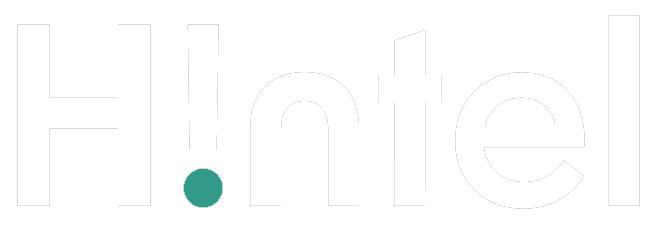What does the future of learning and development look like?
The market size of the global workplace learning & development industry has an estimated worth of approximately $357.7 billion dollars; making your organisation’s L&D strategy a critical part for achieving long-term objectives. It supports retention, enables current staff to do their job better and promotes employee engagement.
It seems obvious; however, I didn’t realise how much I needed my own career development plan to excel throughout my career until I was in my late twenties, that lightbulb moment came as I was sitting in a ‘future leaders’ workshop. I had no idea how to be one.
Like many, I used to self-teach and research trends to sharpen my skills, but the ‘relying on yourself’ mindset is certainly changing as employees demand more from employers. Whether it’s more money, more benefits or more upskilling, the competition is fierce to attract talent.
According to Lorman, 70% of employees would be somewhat likely to leave their current job to work for an organisation known for investing in employee development and learning. Not only could you lose current staff, but companies will also fail to attract the best in the market.
Why is it so important?
Learning and development lie in tandem with career progression. Providing a multitude of training opportunities enables employees to catapult through the progression path your business has on offer; without L&D, employees are unlikely to have the capability to climb the ranks efficiently at the standards expected from a business.
What should a learning and development strategy include?
Your learning and development strategy depend on 6 elements which should all be considered ahead of strategy creation:
- Budget
- Size of business
- Career progression plan
- Type of organisation (start-up, SME, large corporation)
- Where the business is in its growth plans –
- The external and internal landscape of the market – what skills are needed to communicate with your customer base and generate revenue?’
Ultimately, an L&D strategy should be aligned to the business and people goals. The 6 elements mentioned above will help you make key decisions on whether you can hire an L&D team, individual, consultant or needs to be responsibility of the leaders within the business.
Agility equates to sustainability
Every staff member is unique and if you’ve hired them, they should be worth your investment. However, it all starts with employee buy-in and fostering a culture of learning.
Step 1 is to create a work environment where people understand the importance of upskilling e.g ‘by completing this training module, you’ll be able to achieve a promotion’. Organising the coaching plan and creating the strategy is one part but selling the idea to your staff is a huge fraction of the ballgame.
When speaking with Barum Jeffries, Chief Ideas Officer at reclearn, he advised “It’s no longer a one-size fits all approach, L&D needs to be responsive to the rapid and changing demands from the business, the market or industry and to respond to what and how employees learn best. We’ve seen this recently with a shift to virtual and blended learning – those businesses who already had a omnichannel approach before the impact of COVID were better placed during 2020/21. We challenge our delegates to think differently, but a lot of L&D teams aren’t thinking differently and stuck in old school methods of delivery, content and style….”
Setting a plan where your business can mould training programmes and have a responsive approach is mission critical for employees to perform. Some employees can be slower off the mark compared to others, but that doesn’t mean the individual will not achieve long-term success. Being less confident in a certain activity, doesn’t result in underperformance in a practical environment.
Within deverellsmith, one of our highest performers is someone who was much more reserved in the early stages of their career and less inclined to do the basics of the job in hand. By responding to the individual and personalising the programme it enabled them to discover confidence and thrive.
How to find innovation in learning and development?
An L&D strategy is no longer just a group workshop, role plays and mentoring, the future of learning is like a Netflix subscription where you have a suite of materials, tools, and case studies available on-demand.
“The big shift is the role of an L&D professional; it is no longer just to be a content creator; they are the curators of content as well.”
Barum Jeffries, Chief Ideas Officer, reclearn
Training is on its way out and learning is on its way in – it’s much more about giving people the information and tools when and how they want it delivered. Throughout the pandemic, those who had a blended/hybrid strategy weathered the storm a lot quicker.
L&D professionals don’t always have to be the messenger they once were, but they do have to be responsible in bringing it all together. Reflect the modern environment – can you produce podcasts with senior leadership or provide on-demand webinars with a group of managers? Delivering a personal touch is key, and harnessing what you have internally makes each lesson more memorable.
According to Loom’s State Of Modern Work Report, employees spend 64.4% of their time working from home, while the percentage is 66.4% among managers. This contributes to an overall split of 65.2% of time working from home and 34.8% in an office. Interestingly, 91.6% of respondents stated they were satisfied with their hybrid or working from home environment.
Essentially, getting the right balance of digital, virtual and physical learning opportunities enables staff to learn the way they want.
It doesn’t stop after onboarding
There needs to be learning plans for every level of the organisation from new starter to board level. Every single person needs to have learning plan because without it how can you instil a learning culture?
The good news is that the importance of L&D to organisations is changing. LinkedIn Workplace Learning Report 2021 shows that 63% of L&D professionals agree that L&D has a seat at the executive table. It’s no longer up to the ‘Chief People Officer’, it’s time to get specialist.
How to streamline your L&D strategy? deverellsmith’s RPO function supports medium sized businesses with curating an optimal learning and development strategy using real-time data. Contact RPO MD, Pete Sheppard for more details: pete@hintel.co.uk.





